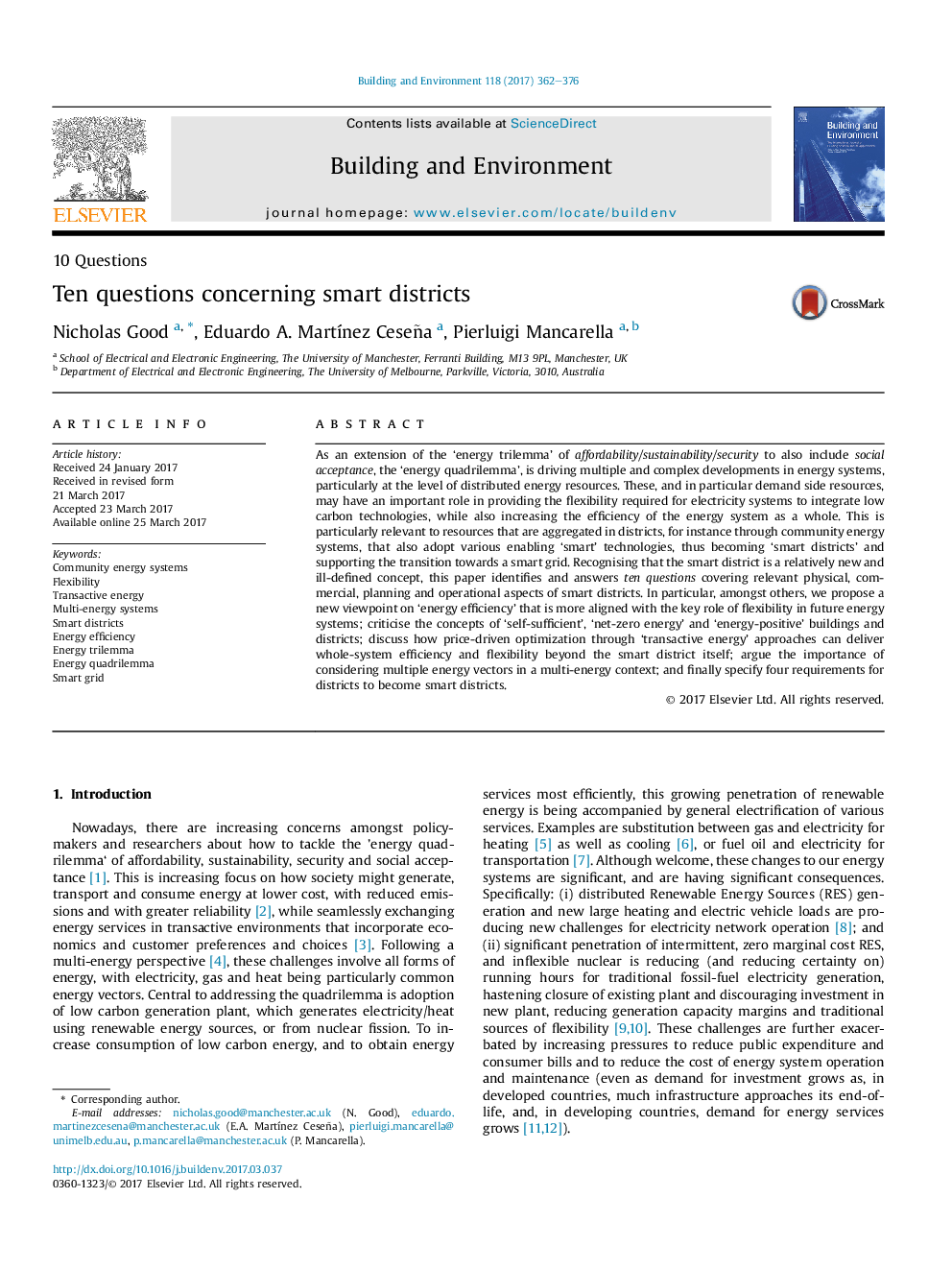| کد مقاله | کد نشریه | سال انتشار | مقاله انگلیسی | نسخه تمام متن |
|---|---|---|---|---|
| 6479241 | 1428374 | 2017 | 15 صفحه PDF | دانلود رایگان |
- The Smart District as a tool to address the energy trilemma/quadrilemma is examined.
- District, rather than building, level assessment promotes whole-system efficiency.
- Consideration of multiple energy vectors and network interaction is crucial.
- Transactive approaches unlock flexibility to optimally provide multiple services.
- Uncertainty and varying time-constants require modelling across multiple timescales.
As an extension of the 'energy trilemma' of affordability/sustainability/security to also include social acceptance, the 'energy quadrilemma', is driving multiple and complex developments in energy systems, particularly at the level of distributed energy resources. These, and in particular demand side resources, may have an important role in providing the flexibility required for electricity systems to integrate low carbon technologies, while also increasing the efficiency of the energy system as a whole. This is particularly relevant to resources that are aggregated in districts, for instance through community energy systems, that also adopt various enabling 'smart' technologies, thus becoming 'smart districts' and supporting the transition towards a smart grid. Recognising that the smart district is a relatively new and ill-defined concept, this paper identifies and answers ten questions covering relevant physical, commercial, planning and operational aspects of smart districts. In particular, amongst others, we propose a new viewpoint on 'energy efficiency' that is more aligned with the key role of flexibility in future energy systems; criticise the concepts of 'self-sufficient', 'net-zero energy' and 'energy-positive' buildings and districts; discuss how price-driven optimization through 'transactive energy' approaches can deliver whole-system efficiency and flexibility beyond the smart district itself; argue the importance of considering multiple energy vectors in a multi-energy context; and finally specify four requirements for districts to become smart districts.
Journal: Building and Environment - Volume 118, June 2017, Pages 362-376
